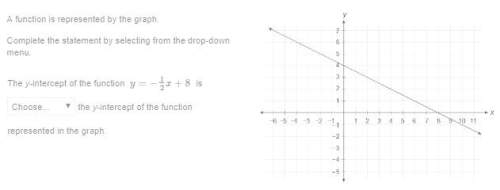
Mathematics, 12.03.2020 17:26 nacho5317
A binary message m, where m is equal either to 0 or to 1, is sent over an information channel. Because of noise in the channel, the message received is X, where X = m + E, and E is a random variable representing the channel noise. Assume that if X ≤ 0.5 then the receiver concludes that m = 0 and that if X > 0.5 then the receiver concludes that m = 1. Assume that E ∼ N(0, 0.24). If the true message is m = 0, what is the probability of an error, that is, what is the probability that the receiver concludes that m = 1?

Answers: 2


Another question on Mathematics

Mathematics, 21.06.2019 15:00
Pete is making decorations for a dinner party. the instructions tell him to use 9 flowers for a medium-sized decoration. complete each statement to adjust the flowers for different-sized decorations based on these instructions.
Answers: 2

Mathematics, 21.06.2019 16:20
To prove that def ~ gfh by the sss similarity theorem using the information provided in the diagram, it would be enough additional information to know that
Answers: 3

Mathematics, 21.06.2019 18:00
What are the coordinates of the midpoint of ab? ,1/2) /2,-1) ,-3/2) /2,-2)
Answers: 1

You know the right answer?
A binary message m, where m is equal either to 0 or to 1, is sent over an information channel. Becau...
Questions

Chemistry, 18.03.2021 23:30


Physics, 18.03.2021 23:30

Mathematics, 18.03.2021 23:30

Biology, 18.03.2021 23:30




Mathematics, 18.03.2021 23:30


Mathematics, 18.03.2021 23:30




Mathematics, 18.03.2021 23:30


Mathematics, 18.03.2021 23:30

Mathematics, 18.03.2021 23:30

Mathematics, 18.03.2021 23:30




